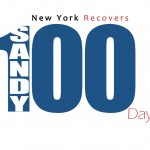NEW YORK – April 13 is the deadline to register for possible federal disaster assistance and to apply for a U.S. Small Business Administration disaster loan to help New York recover from Hurricane Sandy.
As the registration and application deadline nears a week from Saturday, more than $3.1 billion in disaster assistance has been approved for survivors.
That figure translates into families getting back into their homes and schools, businesses reopening, and neighborhoods beginning to move forward.
|
The deadline for survivors to register for possible FEMA assistance and to apply for an SBA disaster loan is April 13. Registration can be made by using one of several sources:
SBA disaster loan applications can be completed at https://DisasterLoan.SBA.gov/ELA. For more information about SBA disaster loans call 800-659-2955 (TTY 800-877-8339). |
Recovery has been a whole community effort that has included local, state, tribal and federal agencies, the private sector and voluntary and faith-based organizations. And as rebuilding continues into the months ahead, resources and expertise from these organizations will be united through Federal Disaster Recovery Coordination, driven by individual, local and state needs.
In the months since Sandy swept across New York, nearly 271,000 people have registered for assistance in the 13 designated counties. More than $943 million has been put into the hands of survivors for rental assistance, repairs and replacement of items lost in the storm.
The SBA has approved loans totaling more than $1.3 billion for homeowners, renters and businesses of all sizes.
The National Flood Insurance Program has paid claims totaling $3.2 billion to 56,688 policy holders.
Just a few days after the storm, the state and FEMA opened its first Disaster Recovery Center for survivors. In all, 65 recovery centers were opened to assist more than 176,000 disaster survivors.
At its peak, FEMA and other federal agencies deployed more than 4,156 personnel to New York from all 50 states, the District of Columbia and five U.S. territories. Nearly 2,000 – including 500 New Yorkers hired for recovery work – remain.
And to relieve the local, state and tribal governments of a significant portion of the financial burden of paying for infrastructure impacted by Sandy, FEMA’s Public Assistance program has approved $817 million for the repair or replacement of public facilities, debris removal and emergency costs resulting from the disaster. The program is funded by FEMA and administered by the state.
To date, 628 projects have been approved for funding under the Public Assistance program, including hospitals, schools, public parks and libraries, transportation and private non-profit organizations.
The U.S. Army Corps of Engineers and local and state agencies have removed 5.6 million cubic yards of debris – enough debris to fill the 102-story Empire State Building a little more than 3.5 times. The Corps also drained 270 million gallons of water from subways, tunnels and underpasses within two weeks of the storm, enough to fill a space equal to 843 football fields one foot deep.
More than 500 local, state and national voluntary and faith-based organizations have helped people in need. They are providing donations, volunteer management, home repair, child care, counseling services and removal of muck and mold from homes.
FEMA, along with local and state leaders, developed the Sheltering and Temporary Essential Power (STEP) program that provided emergency repairs and enabled more than 21,000 families in New York City, Nassau and Suffolk counties to return to their homes until permanent repairs could be completed.
To ensure that language was not a barrier to receiving assistance, FEMA provided information in 26 languages, deployed multilingual field specialists and established a toll-free Language Assistance Line to support non-English/non-Spanish speakers.
Meeting the needs of deaf, hard of hearing or blind survivors was addressed using assisted technology tools that included text-to-speech software and a variety of magnifiers for blind or low vision people visiting recovery centers. Deaf or hard of hearing survivors were offered enhanced listening devices, iPad 3s with sign language interpreting apps, and captioned phones.
The private sector also played a key role in spreading information about the kinds of assistance available. The business community has displayed the message on video screens in Times Square, Madison Square Garden and Lincoln Center, among other places. The Metropolitan Transit Authority placed posters at bus stops and subway entrances and on the Staten Island Ferry. The NYC Taxi Commission put the message on video screens in taxi cabs.
Because of a shortage of available rental units after the storm, FEMA temporarily housed 99,243 individuals and families in hotels and motels through its Transitional Sheltering Assistance Program while they sought longer-term housing arrangements.
FEMA utilized social media to reach the large New York audience and amplify the availability of state and federal programs. News releases about programs and audio and video best practices were posted for the world to see. Since the beginning of this disaster the “@FEMASandy” Twitter account has accumulated 3,100 followers and the Sandy Facebook page has received 2,490 “likes.”
Continue reading here:
April 13 deadline nears for FEMA registration, SBA applications




